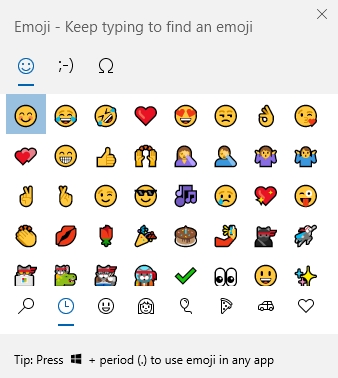If you are on a social media site, or have seen text messages before, you may have come across emoticons. You’ll know them by the little faces that pop up near words in a sentence. They can be used to convey a feeling and help people understand your tone better when writing something online. The use of these symbols has gradually increased since they were first created in 1982. We’re going to show you how they work so that next time someone sends one, you will know what it means!
An emoticon can be anything from an “face letter.” These are made up of different symbols and letters that have been put together to make a face. They can be as simple or as complicated as you want them to be, and they’re often used in place of emoticons because there’s no limit on how many people could use the same type of icon!

Table of Contents
Types of Emoticons
Smiley
The first emoticon is a “smiley” – you’ll recognize it by the two curved lines representing eyes and the gap for mouth. It’s called this because it makes people smile! You can type one of these symbols at any time to convey your mood in text. For example, if someone was feeling sad or angry they might write: 🙁 These are also known as frowning faces. Similarly, 🙂 means that person is happy with their life and 😀 shows excitement about something coming up soon. The same goes for other emotions such as anger, sadness, fear etc., so there are many different variations on what an emoticon could be expressing. Sometimes dog-ear shapes will replace the curve shape around each eye (^_^), or the gap for a mouth will be replaced with parentheses to show happiness as in (^_^)
Icon
A second type of emoticon is one that looks like an icon. These often have little pictures at each end, such as “:-)” which shows someone smiling and laughing. This particular emoji can represent both amusement or joy – it just depends on what the other text in your sentence is about! There are many different types of these icons too, including symbols for love (), kisses (), relationships (=), hugs () etc., so there’s always something you’re feeling that could be represented by one of them. Emoticons are popular because they add more meaning to sentences and let people know how you actually feel without having to say anything else – it’s like a whole language of their own!
Kaomoji
The third type is kaomoji, which is a Japanese word meaning “face letter.” These are made up of different symbols and letters that have been put together to make a face. They can be as simple or as complicated as you want them to be, and they’re often used in place of emoticons because there’s no limit on how many people could use the same type of icon! What makes these even more interesting is that there are plenty of kaomoji characters out there who already exist – think about all those Disney faces like Mickey Mouse () or Winnie the Pooh (), for example.
ASCII
The fourth kind of emoji is called an ASCII art image; this one involves typing some text into your computer which then turns it into what looks like a little picture. It doesn’t matter what the text is, it will always turn into a little picture.
Lenny Face
The fifth type is lenny face, or a “Lenny”. Lenny face is a popular emoticon on the internet that is used to express disbelief, disappointment or sadness. You can make your lenny face by typing three consecutive colons into any text field.
For example, shruggie. It’s kind of like ¯\_(ツ)_/¯ where it looks as if someone has their hands in front of them and shaking their head; this one means that you’re not too sure about something but don’t want to say anything else on the subject!